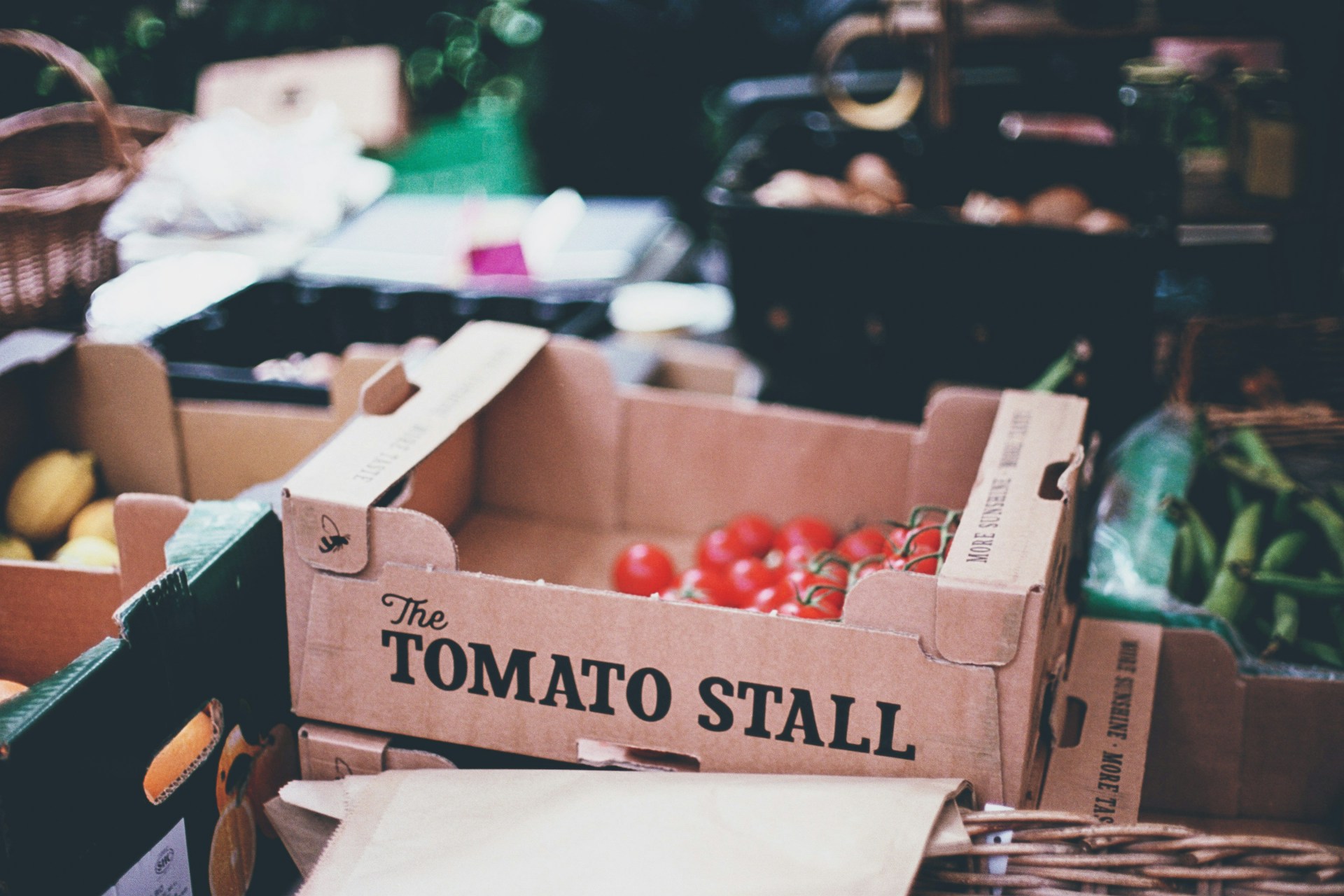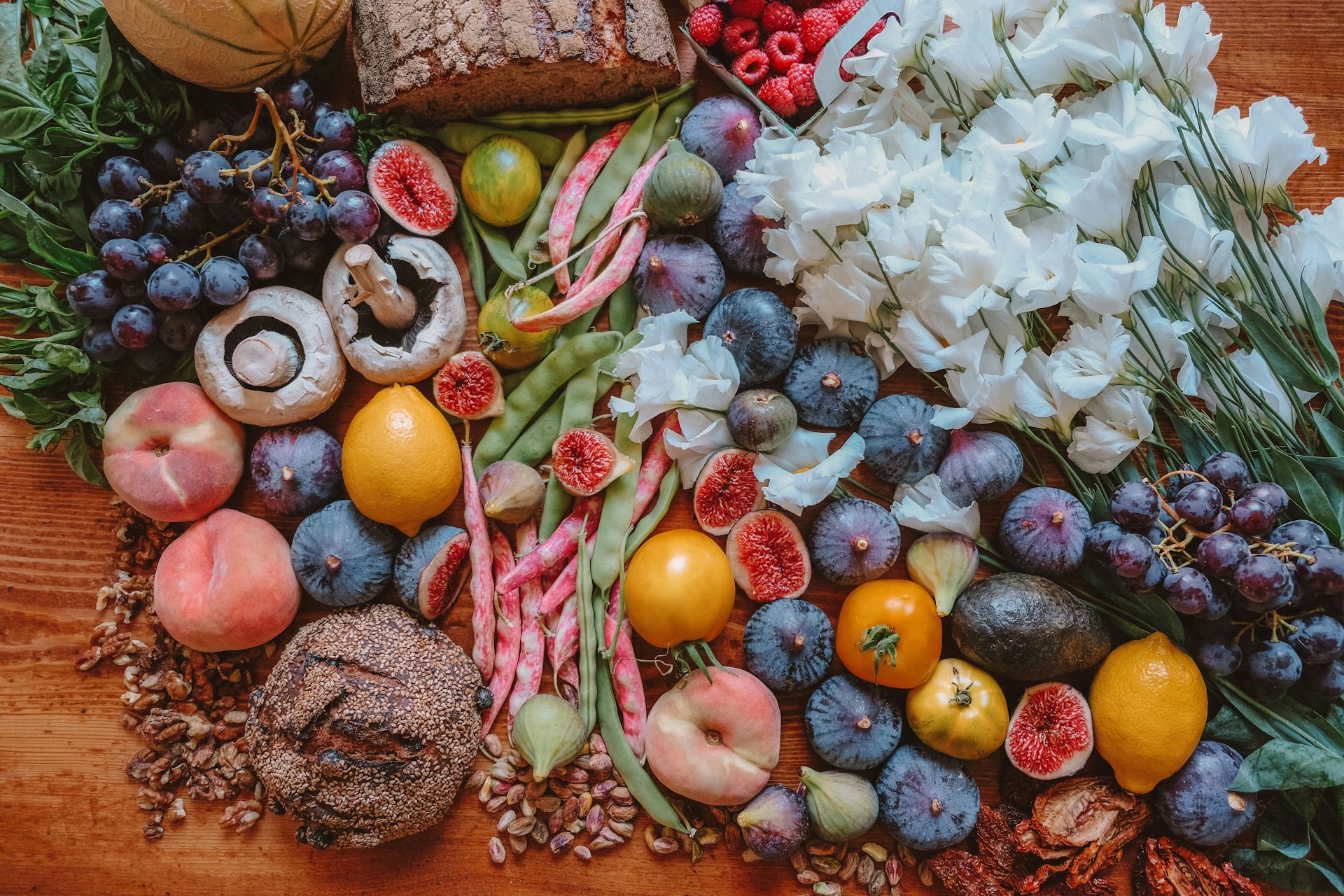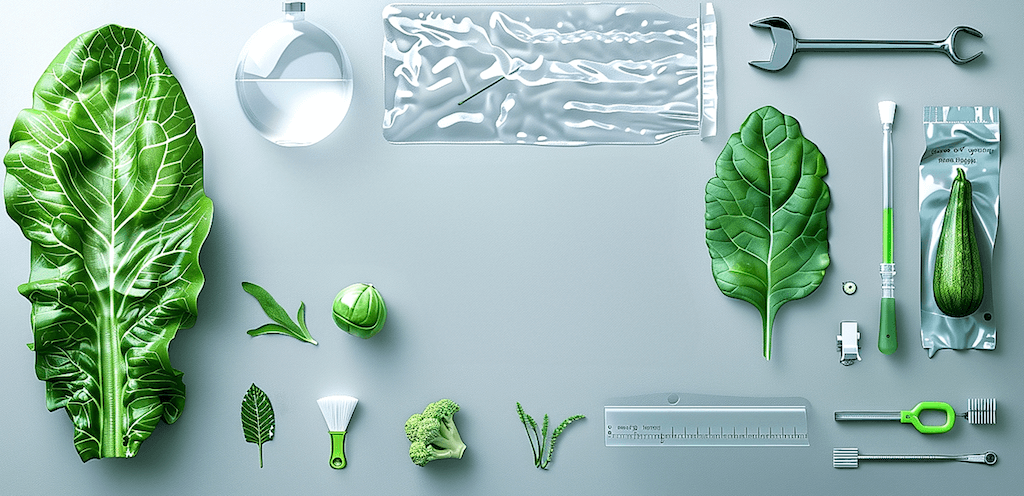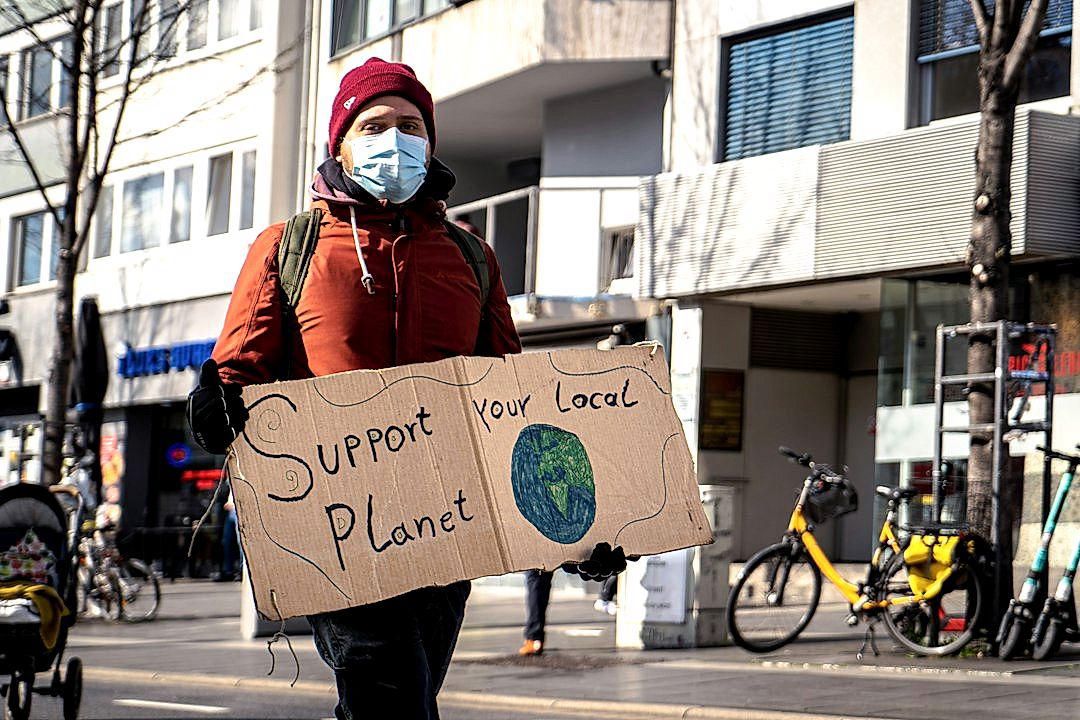The pursuit of sustainability represents a pivotal shift in the consumer-goods industry, particularly in terms of produce packaging.
As environmental concerns grow and consumers increasingly seek businesses that prioritize eco-friendly practices, companies face the dual pressure of maintaining product quality while minimizing their environmental impact.
This introduces a myriad of challenges that require innovative, practical, and economically feasible solutions.
It constitutes a complex yet essential endeavor, proving to be no easy task for industries at large.
Packaging plays a crucial role in preserving the freshness, quality, and safety of produce, yet it’s also a principal contributor to the environmental footprint.
Unpacking these issues, we delve into the pressing challenges of sustainable packaging and the most promising solutions that are emerging within the sector.
Contents
- Challenges & Solutions In Sustainable Produce Packaging
- 1. Challenge: Non-recyclable materials
- 1. Challenge: Non-recyclable materials. Solution: Use plant-based, compostable materials{{DOT}}
- 3. Challenge: Limited shelf life.
- 4. Challenge: High production costs.
- 5. Challenge: Transportation Fragility. Solution: Improve Material Strength for Longevity{{DOT}}
- 6. Challenge: Consumer Education Gap.
- 3. Challenge: Limited shelf life.
- The Bottom Line
Challenges & Solutions In Sustainable Produce Packaging
1. Challenge: Non-recyclable materials
In today’s market, a significant issue is the usage of non-recyclable materials in product packaging, particularly in the food industry. Non-recyclable packaging materials pose a serious threat to our environment.
Disposable materials that are often used include plastic, styrofoam, and certain types of coated paper, which are almost impossible to recycle. The non-recyclability of these materials makes their disposal a significant environmental challenge.
Sustainable packaging should not only protect the product but also have the lowest possible impact on the environment. It’s essential to consider the lifecycle of the packaging material, from acquisition of raw materials to production, transportation, usage, and finally disposal.
Achieving sustainability in packaging is far more complicated than merely replacing traditional packaging materials with alternatives. It involves assessing the environmental impact of each material at every stage of its lifecycle.
In many scenarios, products packaged in non-recyclable materials such as plastic have a lesser carbon footprint than their supposedly ‘green’ counterparts.
This disparity results from factors like the energy-intensive manufacturing process of alternative materials and the reality that plastic materials often result in lighter products, leading to lower environmental impact during transportation.
Therefore, when considering alternatives to non-recyclable materials, it is vital to conduct a complete analysis of the environmental impact that encompasses the entire lifecycle of the packaging.
Despite the complexity of the issue, it is by no means unsolvable. Plant-based, compostable materials are emerging as a viable solution to the problem of non-recyclable packaging.
Materials such as cornstarch, mushroom roots, and seaweed offer unique benefits, including reduced energy requirements for manufacturing and the ability to compost at the end of their life.
These materials not only fulfill functional requirements for packaging but also help to nourish the soil when composted, thereby closing the loop in their lifecycle.
Moreover, since compost is a natural plant nutrient, it helps to grow more plants, which can, in turn, be used to manufacture more packaging materials, thus ensuring a continuous cycle of sustainability.
Funds need to be invested in research and development to fabricate bio-based packaging solutions that can replace traditional non-recyclable materials without impacting the packaging’s functionality or adding significantly to the cost.
In conclusion, while the problem of non-recyclable packaging materials is complex and multifaceted, it is not insurmountable. With a systematic approach and commitment to sustainability, we can replace non-recyclable materials with plant-based, compostable alternatives.
1. Challenge: Non-recyclable materials. Solution: Use plant-based, compostable materials{{DOT}}
The issue of non-recyclable materials in produce packaging has become a rapidly growing concern in society today.
Traditionally, many of the materials used to make such packaging are petroleum-based and difficult to recycle leading to serious environmental issues when they end up in landfills.
One effective solution to this challenge can be the use of plant-based, compostable materials instead.
These materials are more environment-friendly as they decompose naturally, do not release hazardous chemicals, and can contribute to the nutrition of soil when composted.
Switching to plant-based materials not only promotes sustainability but also reduces our reliance on petroleum-based products.
Many innovative companies have begun using these materials to design sustainable packaging that fulfills its purpose while reducing its negative impact on the environment.
Mushroom roots, seaweed, and sugar cane are just a few examples of the plant-based materials currently being harnessed for this purpose.
However, it’s important to note that not all plant-based materials are created equal, and they must be carefully sourced and processed to ensure they are truly sustainable and do not contribute to deforestation or other environmental harm.
Moreover, it’s crucial to keep in mind that compostable materials need specific conditions to decompose, which is not always available in common waste disposal facilities.
Therefore, in order for this solution to be effective, consumers must be educated on proper disposal methods to ensure these materials are composted and not just thrown in the trash.
Some argue that switching to plant-based, compostable materials might be more costly than sticking with petroleum-based ones.
Yet, the long-term environmental benefits of making this move, not to mention the positive business implications from being seen as a green company, can far outweigh the initial costs.
Changing to plant-based, compostable materials is not a simple switch; rather, it is part of a larger shift towards a sustainable circular economy where waste is reduced and resources are efficiently used.
This switch should be supplemented with other environmental practices relating to production, transport, and all other aspects of a business’s operations.
Therefore, although plant-based, compostable materials offer a promising alternative, it’s only part of the solution towards creating truly sustainable produce packaging.
3. Challenge: Limited shelf life.
Limited shelf life proves to be a significant stumbling block in promoting sustainable produce packaging.
Produce items, like fruits and vegetables, are organic by nature and have a limited life span, after which, they start decomposing.
The packaging material should therefore incorporate features to extend the shelf life of the produce, for as long as is naturally possible.
The main aim here is to produce packaging that not only keeps the produce fresh but is also environmentally friendly.
Currently, many of the materials used for sustainably packaging these items do not meet the required standards in maintaining the shelf life of the produce.
This predicament calls for the urgent need to improve the standards of testing bio-degradation of materials used in packaging.
One such solution to this challenge is to improve the bio-degradation assessment measures.
We need stricter and more accurate standards of testing that factor in the possibility of extended exposure to various environmental conditions.
Laboratory tests should be supplemented with real-world tests to ensure the solidity of the packaging and its ability to protect the produce in various conditions.
This improvement in bio-degradation testing standards would importantly ensure that the packaging can continue to protect the produce for longer periods, despite exposure to potentially damaging environmental factors.
These environmental factors can range from exposure to sunlight, to changes in humidity and temperature.
A stringent testing protocol would mean a higher up-front cost but would potentially save a lot of resources in the long run.
This would help to negate the environmental impact from wasted produce and will immensely strengthen the case for sustainable produce packaging.
It is therefore vitally important to improve the bio-degradation testing standards of materials used in sustainable produce packaging.
However, raising these testing standards is not a task for individual companies or organizations, but rather requires a unified effort from all stakeholders involved.
Unified policies and regulations that encourage detailed bio-degradation testing standards will ensure a higher shelf life of produce and thus, more sustainability in the long run.
4. Challenge: High production costs.
The increasing demand for sustainable packaging solutions comes with its own unique set of challenges, one of which is the high production costs associated with these innovations.
Eco-friendly materials and production processes often require a significant financial investment, which can be daunting for businesses that are trying to make the switch.
The high cost of materials, machinery, and labor needed can make the price of sustainable packaging prohibitive for many companies, especially those operating on a smaller scale.
This financial hurdle is further complicated by the fact that the return on this investment is usually long-term, requiring companies to be patient and wait years for their environmentally-friendly efforts to pay off financially.
Implementing sustainable practices in production can come with high initial costs, but the companies that are willing to invest in their future will likely see it pay off in the long run.
While this is indeed a challenge, it’s by no means insurmountable. By initiating bulk production, companies can potentially see a reduction in per-unit costs.
Bulk production allows companies to maximize their use of materials and machinery while reducing waste, leading to increased overall efficiency and lower costs.
Moreover, employing new technology or systems can often result in productivity improvements, which can also contribute to cost savings over time.
Companies looking to tackle the high costs of sustainable packaging must also be willing to invest in training, as better educated and trained employees are more adept at maximizing efficiency and reducing waste.
While it’s clear that the high production costs of sustainable packaging are a significant challenge, it’s also important to remember that the potential benefits of adopting these practices can far outweigh the costs.
Research shows that an increasing number of customers are willing to pay more for products from businesses that are committed to positive environmental and social impact.
Furthermore, the risk of losing customers or facing backlash over improper packaging practices can also be a costly misstep for companies, making the initial investment in sustainable packaging seem more reasonable.
Thus, it is crucial for businesses to consider the full picture: while the upfront costs may be higher, the potential payoff in terms of customer loyalty, positive brand reputation, and long-term sustainability should not be underestimated.
Last but not least, companies can also look at the possibility of securing grants or subsidies aimed at promoting eco-friendly business practices, which can certainly help offset some of the initial costs of implementing sustainable packaging solutions.
5. Challenge: Transportation Fragility. Solution: Improve Material Strength for Longevity{{DOT}}
A primary challenge in sustainable produce packaging is dealing with the transportation fragility of eco-friendly materials compared to traditional, more robust materials such as plastic.
The disruption of the packaging integrity during transport not only compromises the packaged products, but also undermines the core principle of sustainability by creating waste.
An effective solution to the fragility issue is significant investment in research and development to improve the material strength of eco-friendly packaging materials.
Advancements in technology have made it possible to develop compostable and biodegradable materials with strength and durability comparable to traditional materials.
As such, these materials can withstand the strains and stresses of the transportation process while still aligning with sustainability goals.
Increasing the strength of sustainable materials reduces the risk of product damage and waste generation, consequently, improving their reliability throughout the supply chain.
This lends to the longevity of these materials, thereby providing a more viable and sustainable option for produce packaging.
This approach also positions companies favourably in response to increasing consumer demand for environmentally responsible products and packaging, in addition to potentially offering a competitive advantage in the marketplace.
However, while strengthening materials is an essential part of the solution, it is equally important to balance strength with compostability and life-cycle impact.
Materials that are too durable can impede compostability and thus contradict the sustainability objective. This balance is equally crucial from a regulatory perspective, to adhere to compostability and biodegradability standards.
Continuous improvement in material development and testing is necessary to strike this balance.
Simultaneously, it is also critical to work with supply chain partners and develop handling guidelines that can help protect the integrity of the packaging and products during transportation and storage.
In essence, the solution to transportation fragility in sustainable produce packaging is multifaceted and includes material innovation, ongoing testing, and development of standard handling procedures.
This approach effectively navigates the challenge of transportation fragility and paves the way for a more robust, reliable, and sustainable produce packaging solution.
6. Challenge: Consumer Education Gap.
One significant challenge currently faced in the sustainable produce packaging industry lies in the consumer education gap.
Consumers often lack adequate knowledge about sustainable packaging, its benefits, and how to properly dispose it.
Many end users are under the misconception that all ‘green’ packaging can be simply discarded with their regular garbage, resulting in improper waste management.
Additionally, consumers may not always understand the value and impact of their sustainable choices on the environment.
This lack of awareness and understanding among consumers often results in less demand for sustainable packaging, thereby hampering industry growth.
Investing in public sustainability awareness is a solution to this challenge.
Such educational campaigns could involve explaining the importance of sustainability and the role every individual can play towards achieving it.
Moreover, these awareness programs can involve demonstrating the correct procedures for disposing of sustainable packaging to ensure that it does not contribute to environmental pollution.
These programs can be disseminated through various media channels, including social media, television, print, and even at the point of purchase itself.
Consumers can also be educated about the long term savings that come from using sustainable produce packaging.
For instance, explaining how using compostable materials can lower waste management costs can encourage consumers to make sustainable choices.
Highlighting the eco-friendly attributes of sustainable packaging can also help to bridge the education gap.
For example, labels and certifications on packaging can clarify its sustainability credentials and encourage more consumers to opt for green choices.
By emphasizing the value and benefits of sustainable packaging, we can enable consumers to make empowered, informed decisions in their daily lives.
Through this, the consumer education gap can be filled, driving increased demand for sustainable produce packaging and propelling the industry forward.
3. Challenge: Limited shelf life.
One of the toughest challenges in sustainable produce packaging is the limited shelf life of plant-based materials.
The bio-degradable properties that make plant-based packaging eco-friendly also shorten their lifespan, making them less ideal for long-term storage.
This is in direct contrast to traditional plastic packaging, which has an extremely long shelf life.
With plant-based packaging solutions, produce can deteriorate faster due to exposure to humidity and temperature changes.
This limitation can even lead to food waste, which contributes to the larger problem of unsustainable practices.
However, despite the challenge, there are several solutions that reduce the impact of a shorter shelf life and continue to benefit the environment.
Improving bio-degradation testing standards can help tackle the issue of limited shelf life in sustainable produce packaging.
A stronger focus on bio-degradation testing can lead to more innovation in the development of sustainable packing materials.
By conducting robust tests to improve the effectiveness of these materials, we can increase their shelf life without compromising on environmental sustainability.
Comprehensive testing strategies can help identify materials that strike the right balance between shelf life and bio-degradability.
Another way to address short shelf life is to increase the use of preserving agents which are safe and eco-friendly.
Such agents can slow down the degradation process and increase the shelf life of produce in sustainable packaging.
The development of new technologies can also play a crucial role.
The opportunity for innovation in packaging materials that have an extended shelf life whilst remaining sustainable is plentiful.
The ultimate goal is to create sustainable packaging that matches the lifespan of conventional materials without the negative environmental impact.
Innovation and improvement in bio-degradation testing standards give us a glimpse of hope for overcoming the challenge of limited shelf life in sustainable produce packaging.
The Bottom Line
The obstacles surrounding sustainable packaging such as non-recyclable materials, high production costs, limited shelf life, aesthetic appeal, transportation fragility, consumer education gap and regulation variances globally can be effectively managed through viable, pro-green solutions.
Utilizing plant-based, compostable materials, boosting production, enhancing bio-degradation testing standards, employing innovative, eco-friendly designs and strengthening materials for longevity can significantly negate these challenges.
Further, forwarding public education about sustainability and advocating for uniform international eco-standards can bridge the knowledge gap and foster a harmonious global approach to sustainability.
Therefore, while the road to sustainable packaging may be challenging, it is far from impossible.
Through steadfast commitment, innovation, and global cooperation, a sustainable future is within reach.




